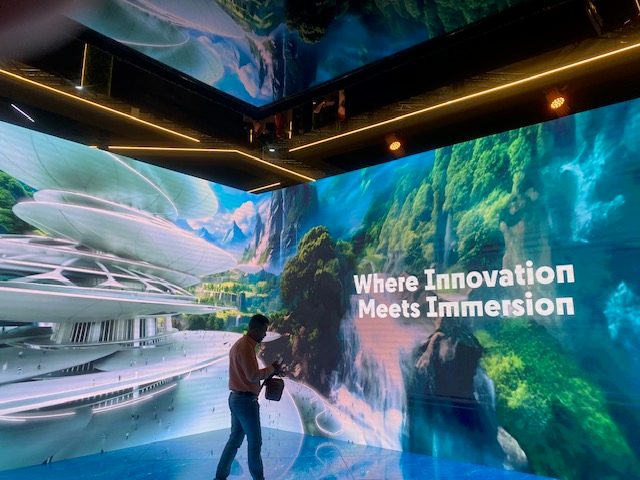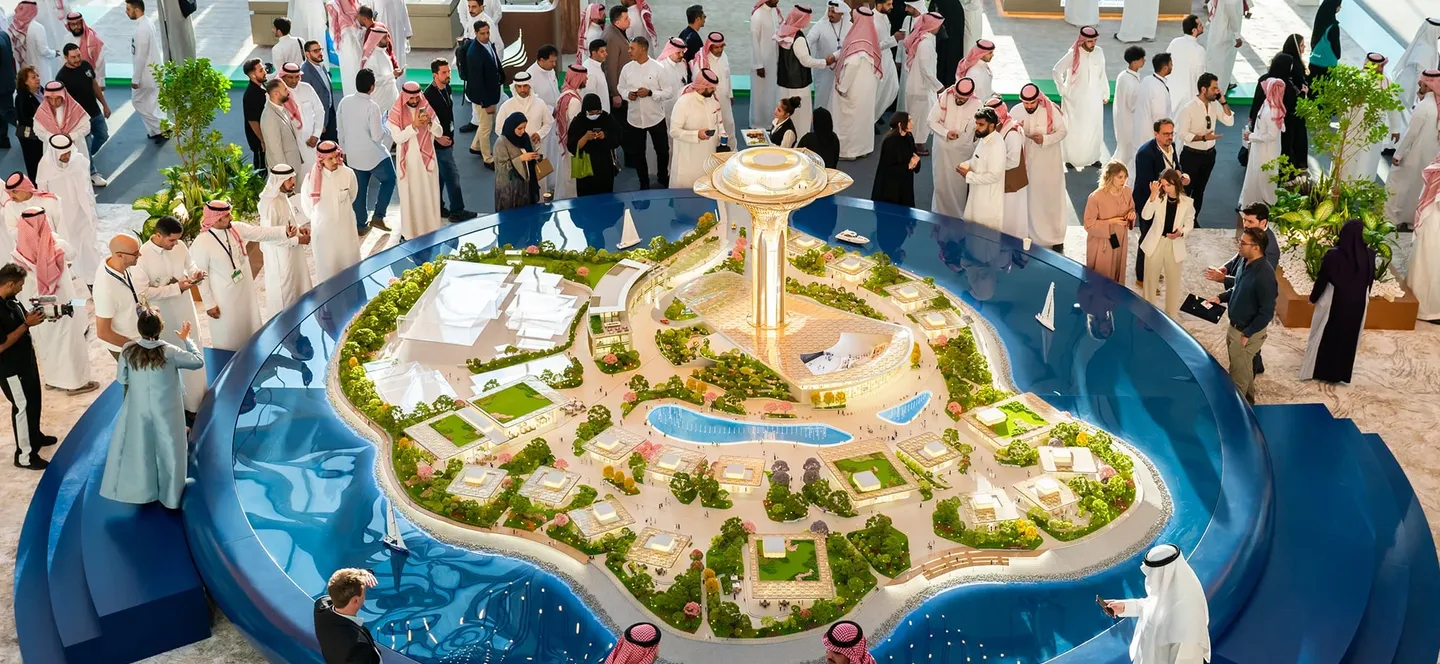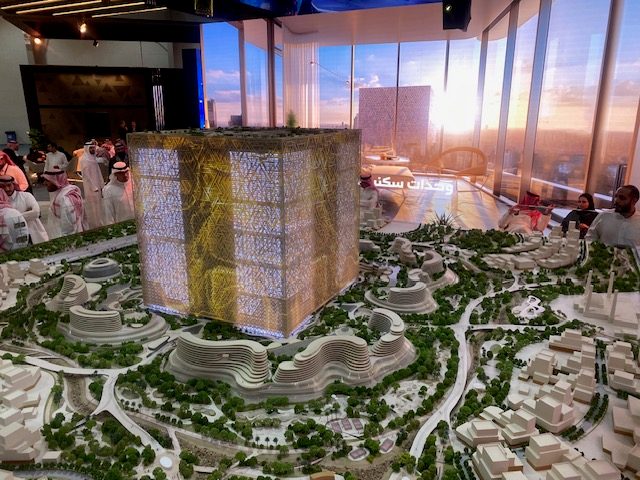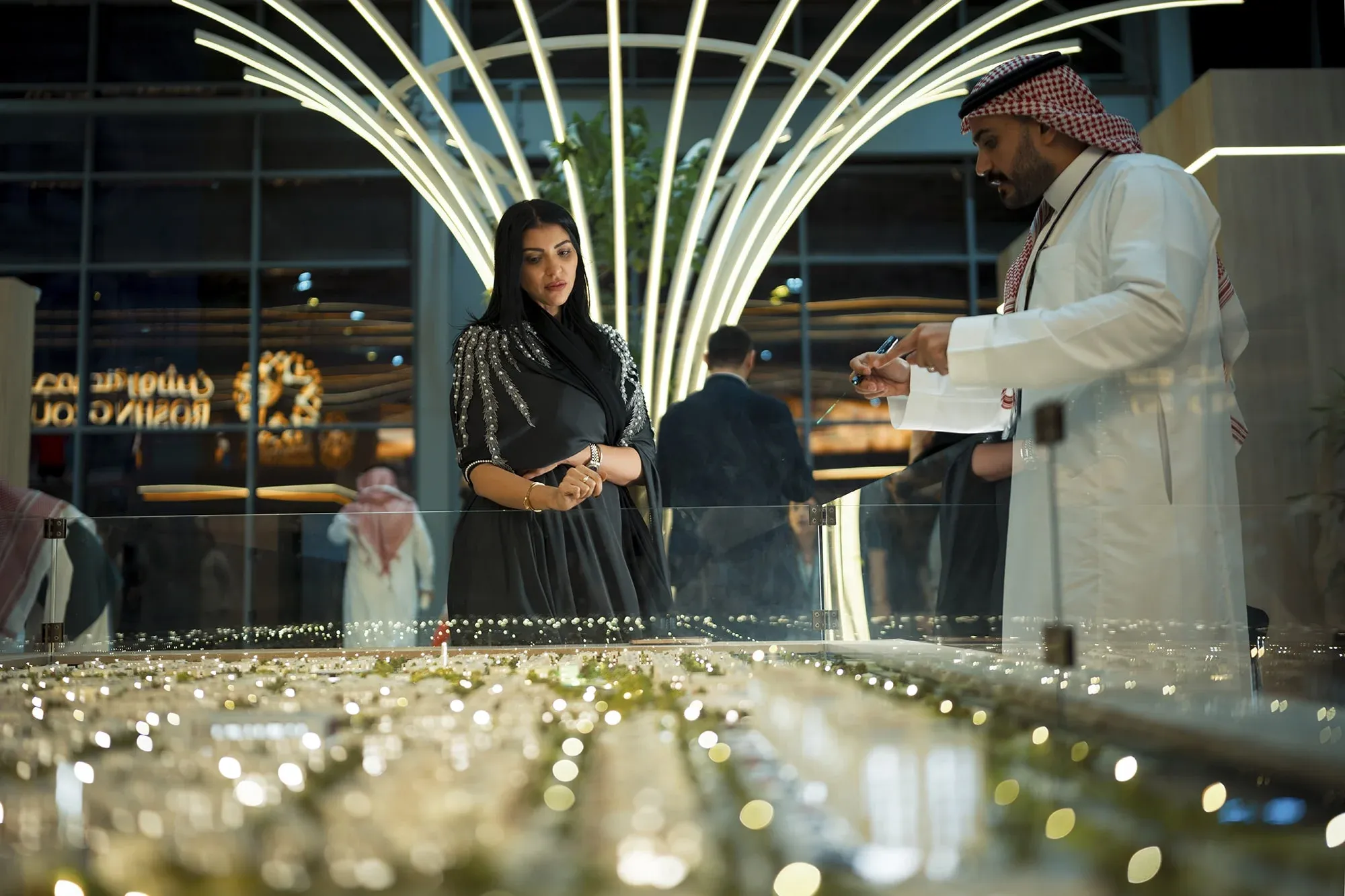Cityscape
Saudi Arabia is staking a large bet on “immersive cities” – locations that use virtual reality and augmented reality to blend the digital and physical worlds for residents and visitors.
This can feel like a video game, but the goal is to enhance practical aspects of life such as navigation, public services and entertainment.
Saudi Arabia’s ambitions may sound unrealistic to some, but it is building these cities right now – and architecture and urban design experts who attended the Cityscape Global real estate forum in Riyadh last week say they could be a blueprint for other countries to follow.
Several of the $1.25 trillion giga-projects in Vision 2030 will include elements of virtual reality. These include the Mukaab cube, The Line linear city, a winter resort town inside a mountain called The Vault, and esports and gaming districts where international competitions are already being held.
Cristina Mateo, a professor at the IE School of Architecture and Design in Madrid, said the government in Riyadh had been innovative in trying to see the world through the eyes of young Saudis – under-30s make up 60 percent of its 32 million population.
“There is a savviness about bringing these sorts of events like esports and cities with an entertainment approach and immersive gaming,” she said at Cityscape.
“I think here they see that the new generations need to learn that and maybe Saudi Arabia will become a referential place for that.
 Andrew Hammond
Andrew Hammond“Increasingly younger generations will be interested in experience – and experience doesn’t have to be something you acquire outside, it can be an integration of indoors and outdoors.
“The world is changing, but the world of life and virtual experiences are merging.”
She described Saudi Arabia as “a country that is positioning itself for the 21st century”, adding: “Maybe we should be looking seriously at those things too. This is what is happening here.”
 Cityscape
CityscapeSaudi Arabia’s younger generations include the architect of the Vision 2030 programme, Crown Prince Mohammed bin Salman. The 39-year-old prince has said he enjoys gaming in his spare time and that spirit runs through many of the giga-projects.
One of the most ambitious projects is the Mukaab – a cube measuring 400 metres on each side, billed as big enough to house 20 Empire State Buildings – in which visitors wander around in a virtual world created on its inner walls. They can even stay at a hotel inside it.
At Cityscape, Saudis crowded around screens showing visualisations of the giant cube – suggesting they had not been put off by social media claims that it resembles the Kaaba, the building inside the Grand Mosque of Mecca.
 Andrew Hammond
Andrew HammondMichael Dyke, CEO of New Murabba – the district where the Mukaab will be located – said at the exhibition that it would give people “the opportunity to move into something that is very different from Riyadh today”.
“The Mukaab sitting at the heart of it is an enormous physical structure, which is masquerading as a building.”
Another speaker at Cityscape, futurist and urban planning adviser Derek Woodgate, highlighted that livability must remain the main rubric for cities.
“When we talk about the human-centric perspective, we’re talking much more about livability, about belongingness, the human contribution to development of that city,” Woodgate said.
“It’s about social change and how we adapt to social change.”
Saudi Arabia is also trying to position itself at the heart of new green and artificial intelligence technologies, investing in electric vehicle manufacturing and green hydrogen and establishing an industrial centre called Oxagon in Neom.
As Parag Khanna, CEO of energy analytics firm AlphaGeo, put it at the Dubai Future Forum taking place this week: “No longer do we live in a simple world of bounded terrestrial societies. On top of that we now have digital civilisation.”
